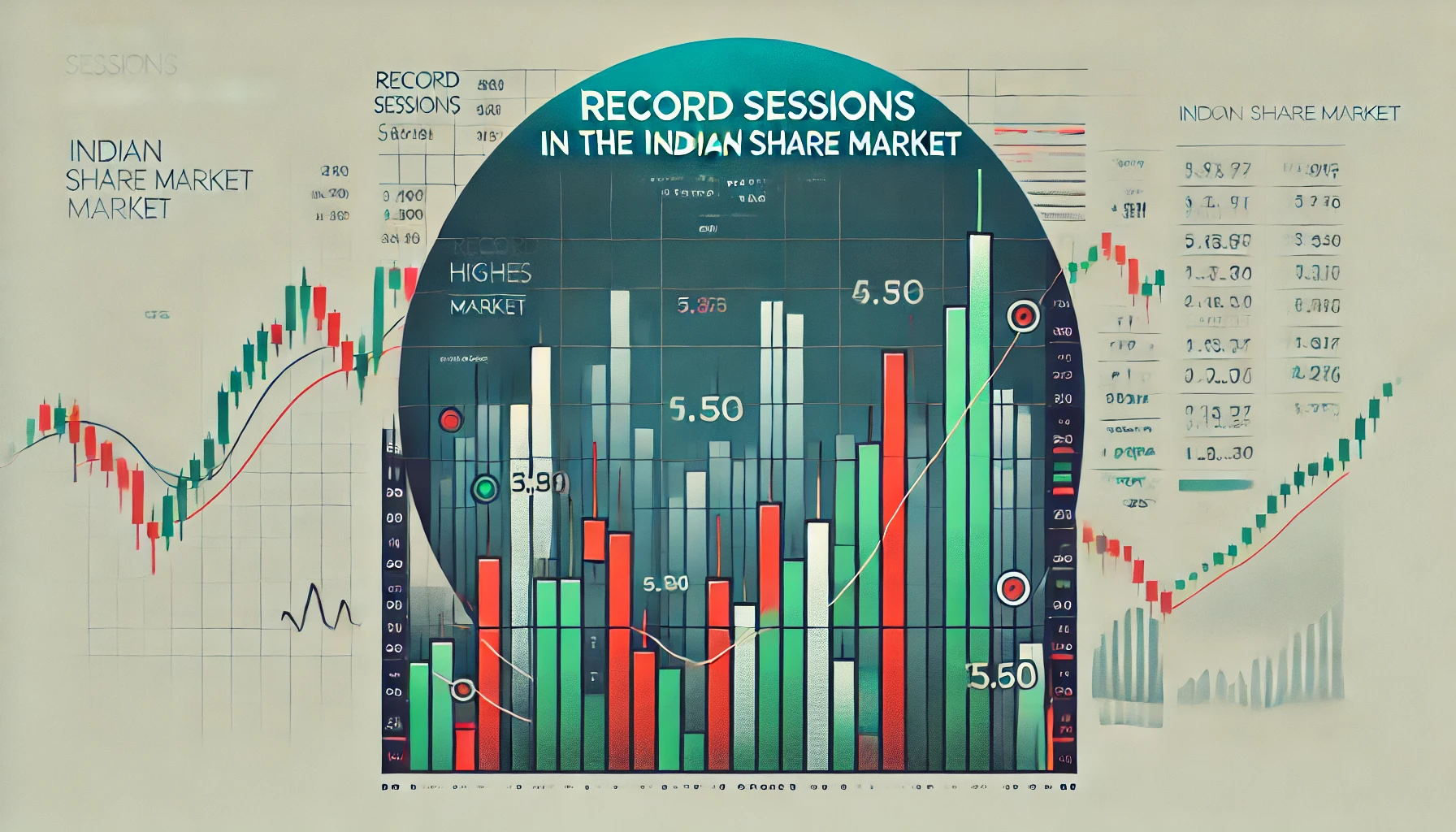The Indian share market is known for its volatility, and traders often rely on technical analysis to identify market trends. One of the most important candlestick patterns is the Engulfing pattern, which is widely recognized for its ability to indicate potential reversals. In this comprehensive guide, we will explore what an Engulfing pattern is, how it can be interpreted, and its historical impact on stock prices in the Indian share market. We will also discuss how traders can use this pattern to make informed decisions and enhance their trading strategies.
What is an Engulfing Pattern?
An Engulfing candlestick pattern occurs when a smaller candle is completely engulfed by the following candle, signifying a reversal in trend. The first candle represents the continuation of the existing trend, while the second, larger candle, suggests that the trend is about to change direction.
| Candlestick Characteristics | Engulfing Pattern |
|---|---|
| First Candle Smaller | True |
| Second Candle Larger | True |
| Engulfing Both Body and Wick | Yes |
There are two main types of Engulfing patterns: Bullish and Bearish.
Types of Engulfing Patterns:
- Bullish Engulfing Pattern:
- This pattern appears at the bottom of a downtrend and is characterized by a smaller bearish candle followed by a larger bullish candle that engulfs the previous one.
- It signals a potential reversal from a downtrend to an uptrend.
- Bearish Engulfing Pattern:
- This pattern occurs at the top of an uptrend, where a smaller bullish candle is followed by a larger bearish candle that engulfs it.
- It indicates a potential reversal from an uptrend to a downtrend.
Interpreting Engulfing Patterns in the Indian Share Market
In the Indian share market, the Engulfing pattern is a reliable signal for trend reversals. However, the effectiveness of this pattern depends on the market context in which it appears.
- Bullish Engulfing in a Downtrend: When a Bullish Engulfing pattern forms during a downtrend, it is often seen as a strong signal that the market may reverse to an uptrend. This suggests that buyers have taken control from sellers, and the price is likely to rise.
- Bearish Engulfing in an Uptrend: A Bearish Engulfing pattern during an uptrend suggests that sellers have gained the upper hand over buyers, and the price may start to decline.
| Engulfing Type | Market Sentiment | Expected Outcome |
|---|---|---|
| Bullish Engulfing | Strong Buying Pressure | Potential Uptrend |
| Bearish Engulfing | Strong Selling Pressure | Potential Downtrend |
Historical Examples of Engulfing Patterns in the Indian Share Market
Several historical instances in the Indian stock market highlight how Engulfing patterns have led to significant price movements. Here are some notable examples:
- Infosys (January 2020): In January 2020, Infosys experienced a Bearish Engulfing pattern following a strong uptrend. The stock price declined by over 7% in the following weeks.
- Tata Motors (March 2021): A Bullish Engulfing pattern appeared on Tata Motors’ chart in March 2021 after a prolonged downtrend. The stock surged by more than 10% in the subsequent month.
| Stock/Index | Date | Engulfing Type | Resulting Trend |
|---|---|---|---|
| Infosys | January 2020 | Bearish Engulfing | Downtrend (7% Decline) |
| Tata Motors | March 2021 | Bullish Engulfing | Uptrend (10% Increase) |
How to Trade Using Engulfing Patterns in the Indian Share Market
The Engulfing pattern is a useful tool for traders looking to capitalize on trend reversals. However, it’s essential to combine this pattern with other technical indicators to improve accuracy.
- Engulfing Pattern with Moving Averages: One effective strategy is to use Engulfing patterns with moving averages. When a Bullish Engulfing pattern forms above the 50-day or 200-day moving average, it is a stronger signal of a trend reversal.
- Engulfing Pattern with Volume: Trading volume plays a crucial role in confirming the Engulfing pattern. High volume during the formation of the pattern increases the likelihood of a significant reversal.
- Engulfing Pattern with RSI: The Relative Strength Index (RSI) can be used alongside Engulfing patterns to identify overbought or oversold conditions. A Bullish Engulfing pattern in an oversold market, as indicated by the RSI, can further confirm the potential for a reversal.
Limitations of the Engulfing Pattern
While the Engulfing pattern is a reliable signal, it is not without its limitations. Traders must be aware of the following:
- False Signals: In highly volatile markets, Engulfing patterns may give false signals, leading traders to make incorrect decisions. It is crucial to confirm the pattern with other indicators.
- Market Context: The effectiveness of the Engulfing pattern largely depends on the market context. For instance, in a strong trend, an Engulfing pattern might signal only a brief consolidation rather than a full reversal.
Case Study: Engulfing Patterns and Nifty 50
One of the most notable examples of the Engulfing pattern in the Indian market is from the Nifty 50 index. In April 2021, a Bullish Engulfing pattern appeared after a period of consolidation, marking the beginning of a strong rally that continued for several months.
| Date | Index | Engulfing Type | Post-Pattern Movement |
|---|---|---|---|
| April 2021 | Nifty 50 | Bullish Engulfing | Uptrend (Continued Rally) |
How to Incorporate Engulfing Patterns in Your Trading Strategy
To effectively use Engulfing patterns in trading, consider the following strategies:
- Wait for Confirmation: After identifying an Engulfing pattern, it’s essential to wait for confirmation in the following sessions. For a Bullish Engulfing, the next candle should close higher, while for a Bearish Engulfing, it should close lower.
- Set Stop-Loss Orders: To manage risk, traders should place stop-loss orders just below the low of a Bullish Engulfing pattern or above the high of a Bearish Engulfing pattern.
- Combine with Other Indicators: Engulfing patterns are most effective when used alongside other technical tools like support and resistance levels, trendlines, and oscillators. This enhances the reliability of the signal and helps traders make more informed decisions.
Conclusion:
The Engulfing candlestick pattern is a powerful tool for identifying potential trend reversals in the Indian share market. Whether bullish or bearish, the Engulfing pattern provides clear insights into shifts in market sentiment, allowing traders to capitalize on these changes.
However, it’s important to use the Engulfing pattern in conjunction with other technical analysis tools to confirm its signals and avoid false moves. By understanding its historical significance and its application in different market conditions, traders can improve their decision-making process and achieve better results.

What is the TRIN stock market indicator?
The TRIN (Trading Index), also referred to as the Arms Index, is a technical analysis …

Record Sessions
The Indian share market is a dynamic and volatile space where major highs and lows …

3 Line Strike
Candlestick patterns are a vital tool for traders in the stock market, offering insights into …

3 White Soldiers and 3 Black Crows
Candlestick patterns are a key element of technical analysis in stock trading, offering clear signals …

Gapping Doji
Candlestick patterns are a critical part of technical analysis in the stock market, providing traders …

3 Windows
Candlestick patterns are a vital part of technical analysis, offering traders and investors insights into …

2 Gapping Candles
In the fast-paced world of the Indian stock market, technical analysis plays a crucial role …

3 Inside Down and Up
Candlestick patterns are powerful tools in the world of technical analysis, offering traders insight into …

Bullish and Bearish Belt Hold
Technical analysis is an essential part of trading in the Indian share market. Candlestick patterns, …

Piercing and Dark Cloud Cover
In the ever-evolving Indian stock market, candlestick patterns are crucial for traders aiming to predict …

Double Doji
Candlestick patterns have long been a favored tool for technical traders to forecast market movements. …

Rising and Falling Windows
In the world of technical analysis, candlestick patterns are vital tools for traders to anticipate …

Tweezer Top and Bottom
In the fast-paced world of the Indian share market, traders use technical analysis tools to …

Morning Star and Evening Star
In the Indian share market, technical analysis is a valuable tool for traders aiming to …

Hammer and Hanging Man
The Indian stock market offers a wealth of opportunities for traders who understand technical analysis. …

Shooting Star and Inverted Hammer
The Indian stock market, with its dynamic nature, presents various opportunities for traders and investors. …

Last Engulfing
The Indian share market is filled with patterns that can help traders make informed decisions. …

Harami
In the world of stock market analysis, candlestick patterns offer valuable insights into price movements. …

Engulfing
The Indian share market is known for its volatility, and traders often rely on technical …

Marubozu
Candlestick patterns are powerful tools used by traders in the Indian share market to analyze …

Spinning Top
The Indian share market, like any other, experiences constant fluctuations due to a multitude of …

Doji
The Indian share market is dynamic, with investors using various tools to gauge stock performance. …

Double Top
In the world of technical analysis, chart patterns are valuable tools that help traders spot …

Tweezer
In the Indian share market, where volatility and price fluctuations are part of daily trading, …

Harami
In the world of technical analysis, candlestick patterns are powerful tools that help traders make …

Heiken-Ashi
Navigating the Indian share market can be challenging due to the inherent volatility and market …

Ichimoku
In the world of technical analysis, few indicators offer the comprehensive insights that the Ichimoku …

Value Charts
In the ever-changing landscape of the Indian share market, traders and investors need tools that …

Money Flow Index
In the Indian share market, identifying trends, understanding momentum, and assessing volume are critical components …

Aroon
In the fast-paced world of the Indian share market, identifying market trends and spotting reversals …

Gator Indicator
In the Indian share market, success is largely dependent on identifying the right trends and …

Adaptive Moving Average
In the dynamic and often volatile Indian share market, traders and investors continuously seek tools …

Coppock Curve
In the ever-evolving landscape of the Indian share market, traders and investors rely on technical …

Premier Stochastic Oscillator
In the fast-paced world of the Indian share market, technical indicators are indispensable tools that …

Dynamic RSI
The Indian share market is known for its volatility, with frequent shifts in trends influenced …

Vortex
The Indian share market offers plenty of opportunities for traders and investors to capitalize on …

Glitch Index
The Indian share market, like all financial markets, is prone to moments of irregular behavior—unexpected …

Triple Exponential Average
Navigating the Indian share market requires traders to use effective tools that help them track …

Know Sure Thing
The Indian share market presents countless opportunities for traders and investors, but making accurate decisions …

Mass Index
The Indian share market is volatile, with price trends constantly shifting due to numerous factors. …


















